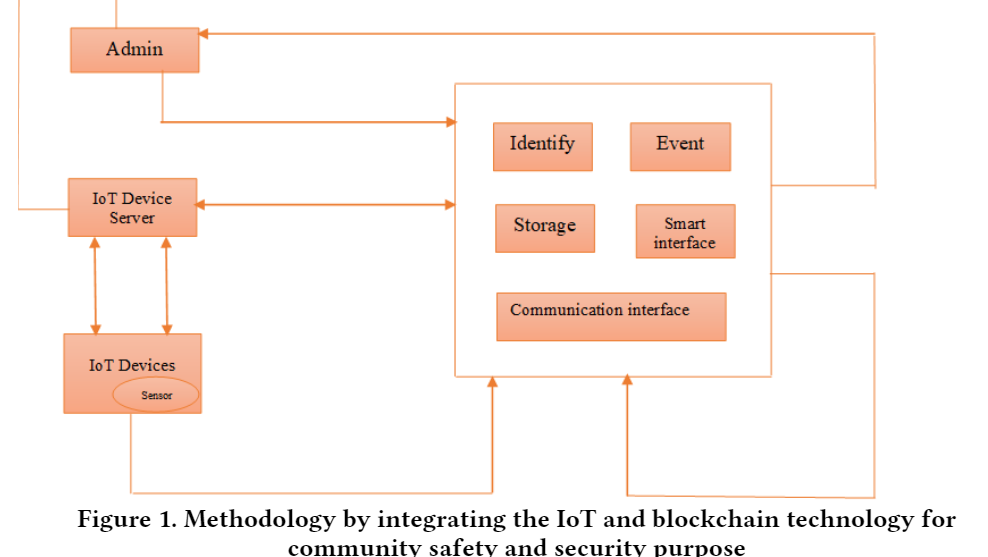Research Diversity
At UAIRL , our research is characterized by a diverse and interdisciplinary approach that bridges the fields of Chemical Engineering, Polymers, AI, Quantum Computing, and Food Chemistry. Our flagship project, Human Quantum Computer Interaction, in collaboration with the University of Colorado Boulder, exemplifies our commitment to innovation and cutting-edge research. Under the leadership of Maher Ali Rusho, our AI Research Lab has made significant contributions to the scientific community, publishing over 15 articles in prestigious international journals, predominantly in Scopus Q1/Q2. We are proud of our intellectual property portfolio, which includes seven patents from India and the UK, reflecting our dedication to advancing technology and addressing real-world challenges.
Next-Generation Advanced Security systems for Communities Using Integrated IoT and Blockchain OverCloud Computing
Abstract

According to human requirements, various structures are being constructed and require some protectionfrom fire accidents, floods, earthquakes, any gas leaks, and any other concerns that may arise in theneighborhood. So far, their security goal is to propose a system integrated with blockchain and an IoTsystem. We structure the system in different steps in our proposal to process the alarm rung by IoT devices.This IoT gadget may be used in either a private or public setting. To do this, we must process the varioussettings for checking and responding to the devices. Data centers that interact between sender and recipientwill verify blockchain data. Finally, we provide a security solution to avoid reply assaults, transmissioninterruptions, and data integrity. This entire system may work together to promote community safety andeliminate avoidable disputes.KeywordsBlockchain, Internet of Things, Cloud Computing, Community Safety, Data encryption.
Keywords
Blockchain, Internet of Things, Cloud Computing, Community Safety, Data encryption.
Introduction

IoT is one of the best technologies that will integrate many components. IoT can gather datafrom the existing parts; each member may unique IoT have the ability to transfer the data tothe cloud. Various incidents have happened in the system; using a standard IoT system wasto make attention to the incident. IoT systems ensure the safety of the network with thedifferent components connected to the system [1]. IoT will include various techniques, step-by-step processes and actions/reactions that concentrate on increasing safety by using IoT[2].IoT security refers method to be used by internet-connected devices. IoT is a very wasttechnology; in our work, it becomes broader. IoT security is used to protect the private/ publiccommunity. By using IoT technology, there is 30-35% growth in every field [3].IoT will collect data in real-time, which will be used to make a decision. It may be accurate/predicted. The IoT can also understand the security strategies to protect the corresponding field[4]
Optimizing additive manufacturing parameters for graphene-reinforced PETG impeller production: A fuzzy AHP-TOPSIS approach
Abstract

Additive manufacturing, particularly 3D printing, has transformed production byenabling precise, layer-by-layer construction with minimal material waste. This study aims tooptimize the mechanical properties and production efficiency of impellers manufactured usingGraphene-Reinforced Polyethylene Terephthalate Glycol (G-PETG) filament. By employing theFuzzy Analytic Hierarchy Process (FAHP) and the Technique for Order of Preference bySimilarity to Ideal Solution (TOPSIS), we identified optimal 3D printing parameters. The resultsshowed that a 65% infill density, 0.20 mm layer height, 50 mm/s printing speed, 90°C platformtemperature, 240°C extruder temperature, and 90 mm/s traverse speed led to a 15% improvementin tensile strength and a 12% reduction in production time compared to baseline settings.Additionally, the impellers produced demonstrated superior surface finish and structuralintegrity, making them suitable for high-performance applications. These findings underscore theimportance of parameter optimization in enhancing the performance of 3D-printed components,particularly for applications requiring high mechanical strength and precision.
Keywords
Additive Manufacturing; process parameter Optimization; Fuzzy AHP-TOPSIS;composite thermoplastic polymer; Sustainable Materials; Mechanical Property; Fused DepositionModeling; Material Performance; Impeller Application.
Introduction

Additive manufacturing (AM) technology, which constructs products layer by layer directlyfrom digital design data, is often considered superior to traditional subtractive manufacturingmethods. This superiority stems from AM's ability to minimize material waste, reduceproduction time, and fabricate complex geometries that would be difficult or impossible toachieve with subtractive techniques. For instance, AM allows for the efficient production ofintricate and customized components with greater design flexibility, which is particularlyadvantageous in industries such as aerospace, automotive, and healthcare [1-3]. Moreover, AMprocesses typically generate less waste, as material is added only where needed, unlikesubtractive methods, which often involve cutting away excess material. These advantages makeAM a preferable choice for modern manufacturing needs [4-5]. Previous research hascategorized AM into seven distinct classes, focusing on both the manufacturing process and theresultant product properties. Among these, Material Extrusion (MEx) processes, utilizing low-cost 3D printers and thermoplastic polymer raw materials, are especially valuable forapplications requiring customized, high-performance parts.
However, optimizing the mechanicalproperties of products manufactured through MEx methods remains a challenge due to themyriad of process parameters involved. Recent studies have highlighted the critical role ofoptimizing FDM process parameters to achieve desirable mechanical properties in printed parts.Chinchanikar et al. [6] explored the effects of FDM parameters such as infill density, layerthickness, print speed, and extrusion temperature on mechanical properties like tensile, impact,and flexural strength, as well as surface roughness. Using a central rotatable composite design,their study demonstrated that the hybrid optimization approach, combining the Non-dominatedSorting Genetic Algorithm (NSGA-II) with Response Surface Methodology (RSM), providedbetter prediction accuracy. Their results identified optimal FDM parameters, including an infilldensity of 61.02%, a layer thickness of 0.26 mm, a print speed of 37.77 mm/s, and an extrusiontemperature of 191.1°C, which significantly improved surface finish and mechanical strength.Similarly, Begic-Hajdarevic et al. [7] emphasized the importance of selecting appropriate FDMprocess parameters to enhance the mechanical properties of parts manufactured using polylacticacid (PLA).
Analysis of Artificial Intelligence and its Impactful Implementation on Job Performance
Abstract

The current study aims to systematically review artificial intelligence and its impactful implementation on job performance as well as aims to present a concise opinion on current research in this area and forward proposal for further studies. This study compiles, combines, and analyzes information based on a thorough literature evaluation. Following a predetermined review protocol, sixteen research articles on artificial intelligence and its impactful implementation on job performance were chosen from seven databases between 2015 and 2023. The selected publications have been evaluated to gather relevant data for several scholarly issues. In 2016, we have seen growing trends in the articles. Most articles have examined the environmental, economic, and social aspects in management. In contrast, other sectors like the health, and pharmaceutical industries have received much ignorance. The outcome of the information extraction reveals that “artificial intelligence,” job performance, “implementation” has the greatest occurrences in the literature separately. Though, less iterative, “combining all these data variables” remains a phase in study. Consequently, this review’s findings can aid in the effective implementation and development of management by academics.
